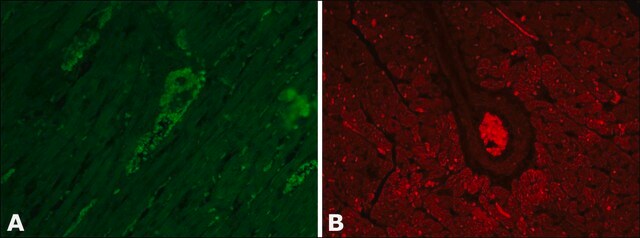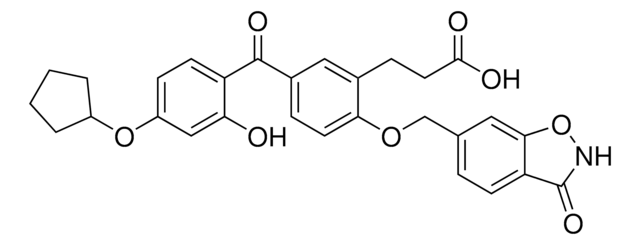5.00554
MHY1485
≥97% (HPLC), solid, mTOR activator, Calbiochem®
Synonim(y):
mTOR Activator, MHY1485, 4,6-dimorpholino-N-(4-nitrophenyl)-1,3,5-triazin-2-amine, Autophagy Inhibitor III
About This Item
Polecane produkty
Nazwa produktu
mTOR Activator, MHY1485,
Próba
≥97% (HPLC)
Poziom jakości
Formularz
solid
siła działania
~2 μM IC50
producent / nazwa handlowa
Calbiochem®
warunki przechowywania
OK to freeze
protect from light
kolor
pale yellow
rozpuszczalność
DMSO: 12.5 mg/mL
temp. przechowywania
2-8°C
ciąg SMILES
C1CCN(CC1)S(=O)(=O)C2=CC=C(C=C2)NC(=O)C3=CC(=NN3)C4=CC=CC=C4O
Opis ogólny
Zastosowanie
Działania biochem./fizjol.
Opakowanie
Ostrzeżenie
Rekonstytucja
Inne uwagi
Informacje prawne
Kod klasy składowania
11 - Combustible Solids
Klasa zagrożenia wodnego (WGK)
WGK 3
Temperatura zapłonu (°F)
Not applicable
Temperatura zapłonu (°C)
Not applicable
Certyfikaty analizy (CoA)
Poszukaj Certyfikaty analizy (CoA), wpisując numer partii/serii produktów. Numery serii i partii można znaleźć na etykiecie produktu po słowach „seria” lub „partia”.
Masz już ten produkt?
Dokumenty związane z niedawno zakupionymi produktami zostały zamieszczone w Bibliotece dokumentów.
Klienci oglądali również te produkty
Nasz zespół naukowców ma doświadczenie we wszystkich obszarach badań, w tym w naukach przyrodniczych, materiałoznawstwie, syntezie chemicznej, chromatografii, analityce i wielu innych dziedzinach.
Skontaktuj się z zespołem ds. pomocy technicznej









